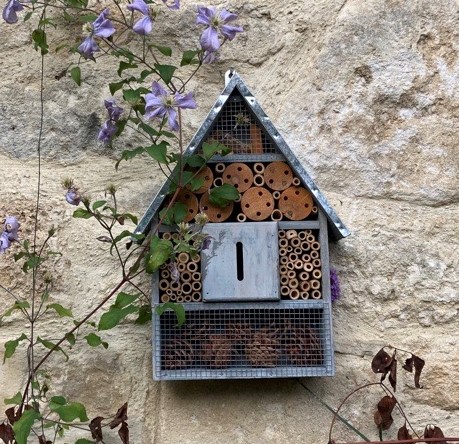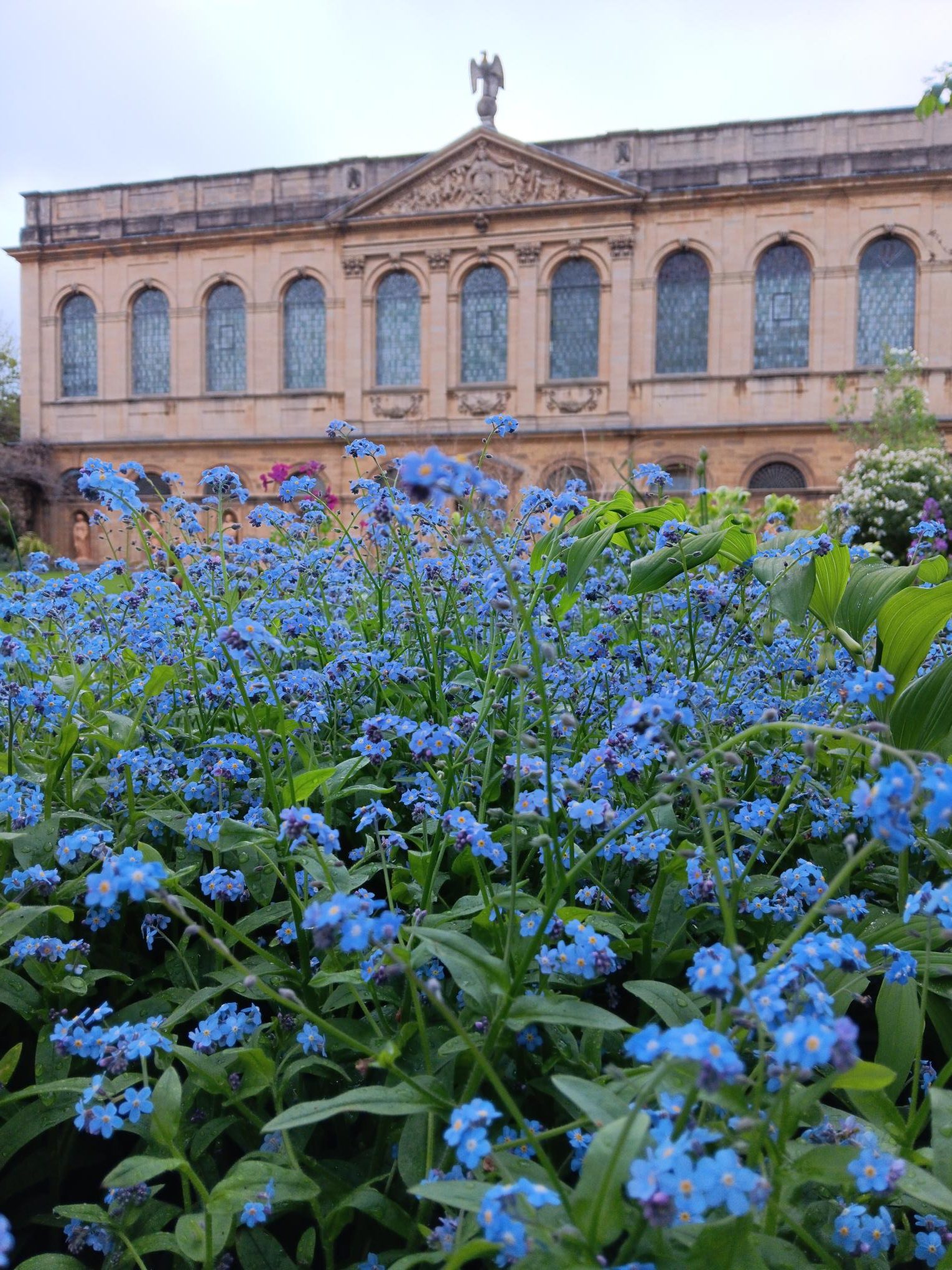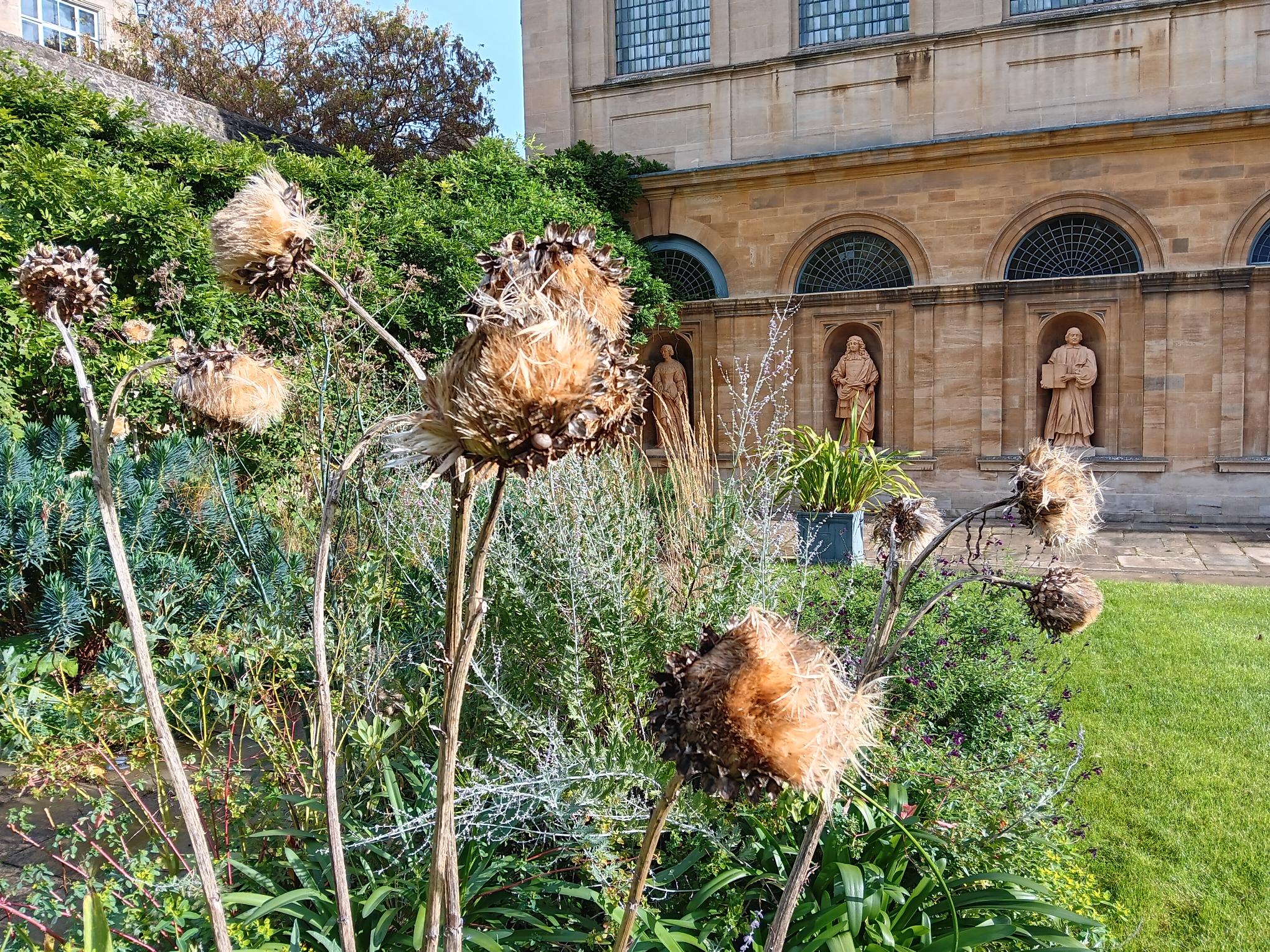Wild about Gardening by Head Gardener Gwyneth Hanson
The gardens at Queen’s are one of many beautiful green spaces in Oxford. They provide members of the College community with a relaxing, natural space, a resource which is increasingly recognised as an essential aid to health and happiness. However, it’s not just humans who benefit from Oxford’s green spaces, it’s also wildlife; with urban sprawl and the destruction of wilder landscapes in the countryside, there’s less habitat for native creatures beyond the walls of College and consequently more needs to be done within College to help out native animals.

Encouraging Birds and Insects
The gardens already provide extra habitats through the addition of bird and bee boxes, which continue to give safe nesting sites. I also continued to feed the birds here from when I arrived in December until the middle of Spring.
The plight of pollinators (which include moths, hoverflies as well as iconic bees) is well known and of critical importance, so it’s worth considering their needs when designing a garden. There were already lots of pollinator-friendly plants at Queens when I arrived, and I hope to increase this over the next few years, choosing plants with single/open flowers where the nectar and pollen is easy to access, or plants that flower very early or late in the year when there are few other food sources. In the winter months the Sarcococca growing in Drawda Garden was alive with honey bees feasting on its nectar whenever the weather was warm and dry enough for foraging flights.
Water is also important for insects, so it’s good to provide a dish of water, with pebbles for landing on, especially in dry weather. I have put a wide shallow bowl in the Provost’s garden for insects and birds to use. If you have enough space in your own gardens a pond would be a perfect way to help not just them, but also small mammals like hedgehogs (just make sure it has gently sloped sides so nothing is accidentally trapped in the pond).
Other ways to help birds are to have hedges and shrubs for them to hide and roost in. If you want to trim these, you need to bear in mind that birds may have chosen to nest in them, and you are not allowed to disturb nesting birds. The RSPB say that the breeding season generally runs from March to August, so try to wait and do any heavy cutting back outside of these months, and always look carefully before starting the task.
Another great thing you can do for birds is to grow plants with fruits that birds enjoy eating. I intend to plant some more berry-producing plants, hopefully starting this autumn, in time for the cold winter days when birds most rely on extra food.

Controlling Problem Insects and Weeds
As well as providing food and shelter for wildlife, there are also plenty of other things that help by us not doing them.
I don’t use insecticides for problematic pests as they often kill more than the insect you are aiming at. Instead, I use bio-control for critical problems like box moth, which can be targeted in its caterpillar stage by a bacillus that just attacks the caterpillars alone. For slugs or vine weevil, nematode worms that feed only on them can be used.
I don’t worry about small infestations that only cause cosmetic damage, as most things are only a temporary issue and if you build up a population of birds, hedgehogs and predatory insects (like lacewing and ladybirds) in your own home gardens, then your garden ecology will deal with the pests for you.
If you get alarmed by a plague of aphids you can deal with that by squishing them or squirting diluted washing up liquid on them.
I try to avoid using harsh chemicals like Glyphosate to treat weeds, instead I physically remove them, though on hard surfaces diluted vinegar (about 20% vinegar to water) can be sprayed on. On the borders, mulch can be applied after all the cutting back has been done and before the bulbs push through to suppress weed growth.
Conserving Water
Mulch is great for keeping the weeds down and also keeps moisture in the soil, which reduces the need to water. We should be trying to reduce our mains water use but this has been tricky in recent years with our changing climate. Ideally any watering should be done early in morning or at end of the day to avoid evaporation. If you are desperate to water your lawn try switching the sprinkler on at night when there will be less wastage. If you don’t want to pad out in your slippers, get an automatic timer (which also saves you having to ask someone to pop round when you go on holiday). There are seep hoses for laying in borders, which can be used with a timer, and are much more efficient if run at night rather than watering borders in the daytime. But really try and avoid mains water if you can.
Invest in water butts if you have space (the bigger the better) and then only water those plants that are critical. This chore can be reduced by choosing plants that are drought tolerant.
Many of the plants growing at Queen’s are drought tolerant, especially plants in the Provost’s garden, which being situated on top of the Lower Library, has a very shallow soil depth (mostly 30 to 40cm) and is also planted in an extremely free-draining growing medium with little actual soil. Plants that cope best with dry conditions not surprisingly come from more hot and arid parts of the world. Plants that do well in the dry conditions at Queen’s are generally from the Mediterranean climate regions and within the sheltered urban microclimate, are normally hardy enough to get through mild winters. They may struggle at higher latitudes or altitudes especially if there is no shelter from wind, frost pockets or heavy soil that doesn’t drain and sits wet.
You can try looking in your neighbours’ gardens for plants that are adapted to dry conditions (plants with silver, needle-like or hairy leaves or those that are deep rooted) to see what may be resilient in your garden, which will have similar climate and soil. You can keep your garden looking good with minimal input, though do remember plants need access to some water to have a decent nectar flow for pollinators.
I hope you have a great summer sharing your garden with the animals who call it home and I will continue encouraging more to join me here at Queen’s.



